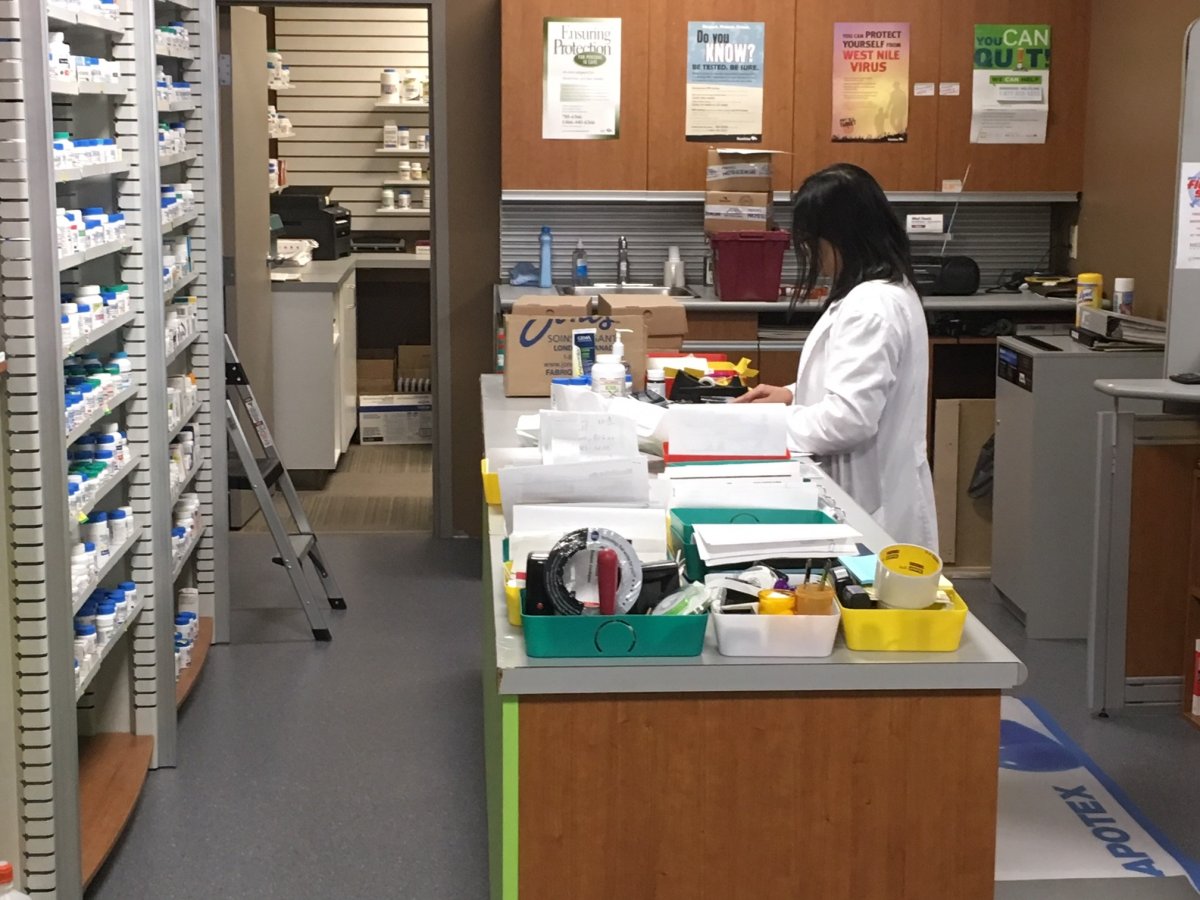Nearly one million Canadians opted for emptier grocery bags and colder homes in order to pay for prescription drugs in 2016, suggests a nationwide study on the topic published Tuesday.

The review was conducted by researchers at the University of British Columbia, Simon Fraser University, McMaster University, and the University of Toronto.
READ MORE: U.S. states considering importing prescription drugs from Canada to lower costs
The study, published in the online version of the Canadian Medical Association Journal, indicated that 968,000 Canadians reduced their spending on basic necessities to pay for medication – with 730,000 cutting their food bills and another 238,000 skimping on heating.
WATCH: The science of prescription drugs coming to a pharmacy near you

According to the findings, an estimated 1.7 million Canadians – 8.2 per cent of those ordered to take medications in 2016 – didn’t fill their prescription because of cost.
Michael Law, a UBC professor and Canada Research Chair in Access to Medicines, said that while it was already known that people had difficulty paying for prescription drugs, the analysis shows the extent to which people are eliminating necessities to purchase them.
Quebec had the lowest percentage of people (3.7 per cent) not filling a prescription due to the costs. The worst offender was British Columbia at 8.11 per cent, in particular due to the high cost of living and high deductibles for medications.
“We tend to think that people in Quebec have better coverage for medicines than elsewhere in Canada,” said Law, the lead author of the study.
Another consequence of not taking medications is that many people in 2016 ended up in the emergency room (93,000) or consulted a doctor (300,000) – measures that increased health-care costs.
READ MORE: Canada’s health-care system is third-last in new ranking of developed countries
“It suggests that if you improve drug coverage, the cost to government is of course gonna be the cost of the drug, but you are gonna see some savings on the other end as people don’t end up in hospitals and in the doctor’s office,” Law said.
WATCH: Storing prescription drugs at home, and finding other alternatives to manage pain

Of those surveyed, young adults, low-income earners and those without drug coverage were more likely to have problems buying drugs as well as requiring additional care.
Women in general also faced difficulties. They take more medication than men, such as contraceptives, which aren’t covered by insurance plans, Law said. They also earn less money on average.
Of the medications that commonly weren’t purchased for financial reasons, most were for depression, anxiety or other mental-health issues.
More than 28,000 people participated in the study, with data collected with assistance from Statistics Canada, as part of its Canadian Community Health Survey.
- ‘Shock and disbelief’ after Manitoba school trustee’s Indigenous comments
- Canadian man dies during Texas Ironman event. His widow wants answers as to why
- Several baby products have been recalled by Health Canada. Here’s the list
- ‘Sciatica was gone’: hospital performs robot-assisted spinal surgery in Canadian first



Comments